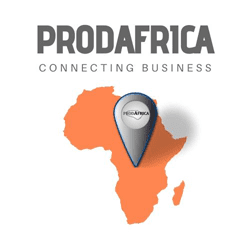Botswana, a landlocked country in Southern Africa, has experienced a remarkable economic transformation over the past six decades. From being one of the poorest countries in the world at the time of its independence in 1966, Botswana has become an upper-middle-income nation with a diversified economy. The Economy of Botswana :
1960s: The Road to Independence
In the 1960s, Botswana’s economy was primarily based on subsistence farming and cattle rearing. The discovery of diamonds shortly after independence marked a turning point, laying the foundation for economic growth.
- GDP per capita (1966): $70 World Bank
- Main Industries: Agriculture, cattle rearing
1970s: The Diamond Boom
The 1970s saw the development of the diamond mining industry, which quickly became the backbone of the economy. The government’s prudent management of diamond revenues and investment in infrastructure fueled rapid growth.
- GDP Growth Rate (1970-1979): Average 9% IMF
- Main Exports: Diamonds, copper, nickel
1980s: Diversification and Development
During the 1980s, Botswana focused on diversifying its economy to reduce dependence on diamonds. Efforts were made to promote manufacturing, tourism, and agriculture. Education and healthcare also received significant investment.
- Unemployment Rate (1980): 13.5% Botswana Statistics
- Tourism Growth: 8% annually UNWTO
1990s: Continued Growth and Stability
The 1990s were marked by political stability and consistent economic growth. The government continued to invest in social welfare and infrastructure, maintaining a reputation for good governance.
- Inflation Rate (1990-1999): Average 8.5% Bank of Botswana
- FDI Inflow: $200 million annually UNCTAD
2000s: Challenges and Opportunities
The new millennium brought challenges, including the impact of HIV/AIDS on the workforce and global economic downturns. However, Botswana’s resilient economy continued to grow, with investments in technology and renewable energy.
2010s: Towards a Knowledge-Based Economy
In the 2010s, Botswana shifted its focus towards becoming a knowledge-based economy. Emphasis was placed on education, innovation, and technology, with the aim of reducing reliance on natural resources.
- Education Expenditure: 8.7% of GDP UNESCO
- Technology Adoption Rate: 15% growth in internet users ITU
2020s: Navigating Global Challenges
The COVID-19 pandemic has posed significant challenges to the global economy, and Botswana has not been immune. The government’s response has been focused on supporting businesses and individuals while investing in healthcare.
- COVID-19 Economic Relief Package: $2 billion Government of Botswana
- Healthcare Investments: 5% of GDP WHO
Then
Botswana‘s economic journey over the past 60 years is a testament to visionary leadership, prudent fiscal management, and a commitment to development. The country’s ability to adapt to changing global dynamics and invest in its people has positioned it as a model for sustainable growth in the region.
With a focus on continuous improvement, innovation, and resilience, Botswana’s economy promises to remain a beacon of success in the African continent.
Exports:
- European Union (EU): Diamonds, machinery, and meat products.
- South Africa: Diamonds, copper, nickel, textiles.
- United Arab Emirates (UAE): Diamonds and precious metals.
- United States: Diamonds, textiles, and machinery.
Imports:
- South Africa: Food, machinery, electrical equipment, fuel.
- China: Machinery, electronics, textiles.
- United Kingdom: Vehicles, machinery, pharmaceuticals.
- India: Pharmaceuticals, machinery, textiles.
Exports:
| Partner | Percentage |
|---|---|
| EU | 40% |
| South Africa | 25% |
| UAE | 20% |
| United States | 15% |
Imports:
| Partner | Percentage |
|---|---|
| South Africa | 60% |
| China | 20% |
| United Kingdom | 10% |
| India | 10% |
Botswana’s Key Export Partners
Botswana’s Key Import Partners

Team ProdAfrica
team@prodafrica.com